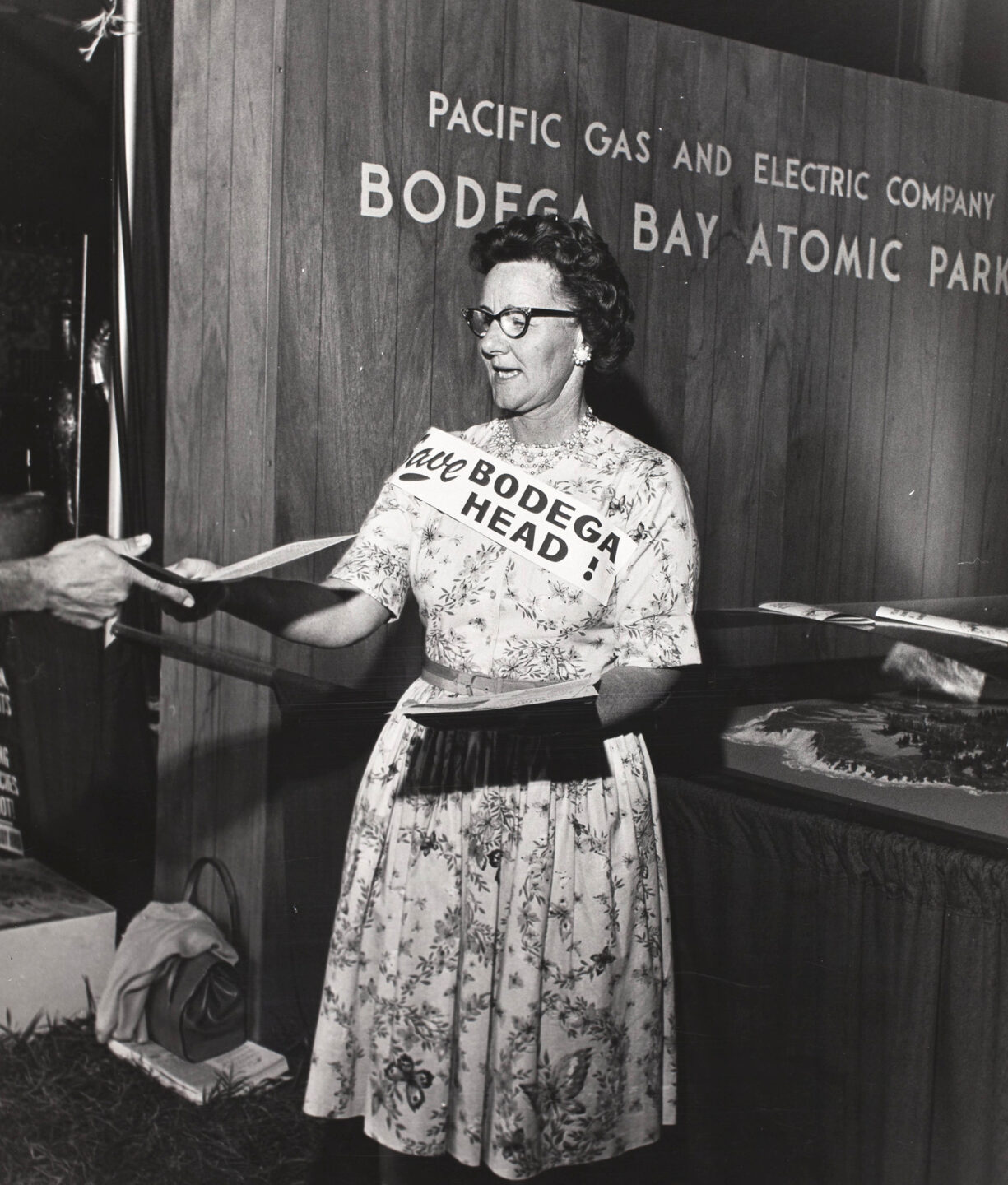An aerial view of the proposed nuclear facility on Bodega Head in 1964. (Sonoma County Library)
How the Battle of Bodega Head kept a nuclear plant off the San Andreas Fault
If PG&E had its way, it would have built a nuclear plant atop the San Andreas Fault along a pristine stretch of the Sonoma coast.
It was in 1961, a time of boundless optimism about the potential of nuclear energy, that the utility revealed plans for one of the world’s biggest nuclear generators on a promontory at Bodega Bay. Locals were mortified. They protested the project and, in a publicity stunt, released 1,500 helium balloons to illustrate how radioactive molecules might travel across Northern California.
“I began to think that there really was evil in the world,” a leader of the opposition, David Pesonen, recalled in Sonoma Magazine. “PG&E had a single-mindedness that didn’t involve people’s well-being.”
The nuclear plant barreled toward completion.

Then, in a pivotal moment, the activists asked a renowned geologist named Pierre Saint-Amand to inspect the site. His report, published in 1963, noted that the fault that once destroyed San Francisco ran directly through a construction pit.
Even so, PG&E dismissed the concerns, declaring that the company would simply “overdesign the plant.”
Saint-Amand’s report, however, got the attention of federal regulators who confirmed his findings. In March of 1964, an 8.6 earthquake in southern Alaska reshaped the shoreline and provided a dramatic illustration of the risks at stake. Gov. Pat Brown came out against the Bodega plant. With the writing on the wall, PG&E surrendered.
The Battle of Bodega Head, as it became known, has since been credited as ushering in the nuclear free movement. “The tactics and precedent set at Bodega,” a historian told the Press Democrat, “are one of the big reasons that the California coast is not lined with nuclear plants.”
Read more: Bay Nature | Sonoma Magazine
Get your daily dose of the Golden State.